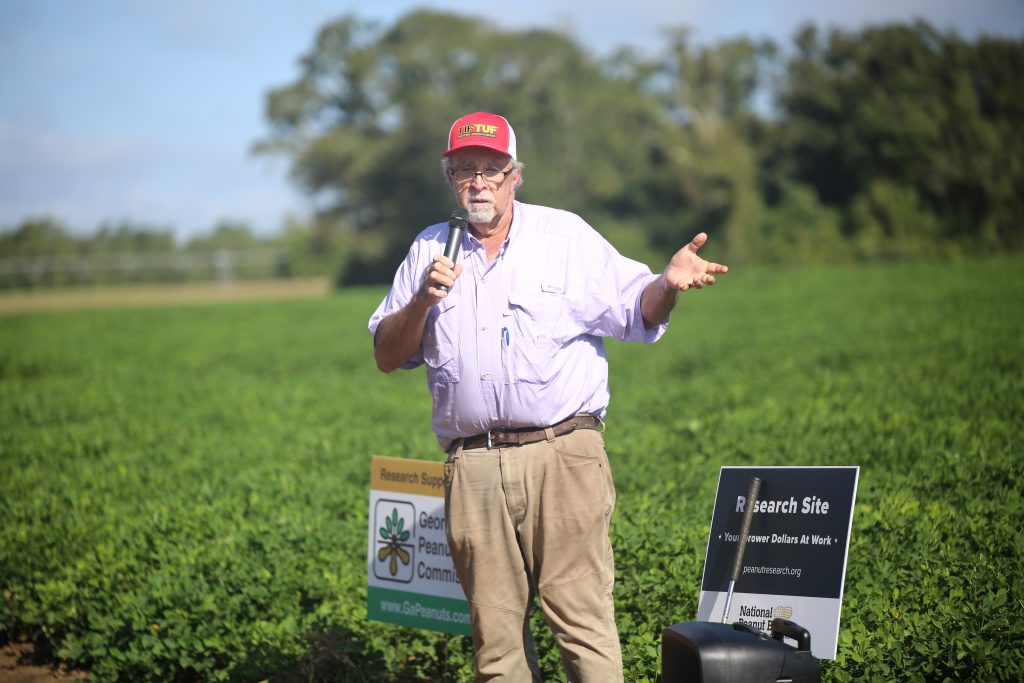 Albert Culbreath, research plant pathologist at the University of Georgia, started his career in Tifton back in 1989. Culbreath came to the university to work on foliar diseases of peanuts, but tomato spotted wilt virus made an appearance and he has been working on that virus ever since his arrival to Tifton.
Albert Culbreath, research plant pathologist at the University of Georgia, started his career in Tifton back in 1989. Culbreath came to the university to work on foliar diseases of peanuts, but tomato spotted wilt virus made an appearance and he has been working on that virus ever since his arrival to Tifton.
“We’ve made a lot of progress. The virus progressed extremely rapidly in those first few years by the mid-90s,” Culbreath says. “TSWV was a significant part of crop losses, and the virus came close to putting us out of peanut production. I’m proud to be part of an integrated management research extension team that addressed the problem.”
Through the years, the team of researchers working on TSWV has made a lot of strides in managing the virus. An integrated approach has been an excellent example of that, Culbreath says.
“No production practice actually provides adequate control of the disease in the field, but we’ve put together multiple factors that all work together so we can have a huge impact on managing TSWV,” Culbreath says.
Culbreath continues to work on spotted wilt and is proud of the progress the research team has made through the year.
“We’re living with the virus now, but it is still an extremely important factor in our peanut production,” Culbreath says. “Our losses to spotted wilt have been up the last couple of years.”
Culbreath’s research program is geared towards helping breeders develop better and better varieties and better resistance to spotted wilt so that it will hold up to it. Currently there are no varieties with full immunity to the virus.
Through Culbreath’s integrated research program, he helps with mapping and marker development that will hopefully help the next generation of breeders and plant pathologists. His research focus continues to compare advanced breeding lines from multiple breeding programs and the lines resistance to spotted wilt.
Culbreath also compares the available peanut varieties response to Thimet insecticide since spotted wilt is vectored by thrips. Thimet is the only insecticide available that controls thrips and gives some suppression of spotted wilt.
According to Culbreath, the research is a team effort which includes researchers and extension professionals across multiple disciplines.
The virus is complicated but together the team of researchers are making progress.
“When you have a virus that’s complicated like spotted wilt, then it takes a team approach,” Culbreath says. “We are continuing to make progress, but it seems like the virus stays two steps ahead of us sometimes.”
There are some promising lines in the breeding program that has resistance to spotted wilt but for now the variety, Georgia-12Y is the best line with resistance to spotted wilt. In years with heavy spotted wilt pressure, Culbreath says growers need to be mindful of the optimum planning date, higher seeding rates and the insecticide Thimet.
“We are continuing our work on spotted wilt by putting together as many factors as possible that are available now and looking for new and better resistance in the breeding lines that we have and what will be coming down the pipe,” Culbreath says. “So, hopefully we can eventually get to where spotted wilt is not a factor in peanut production, but for the moment, I’m afraid it’s still a mighty strong enemy.”
